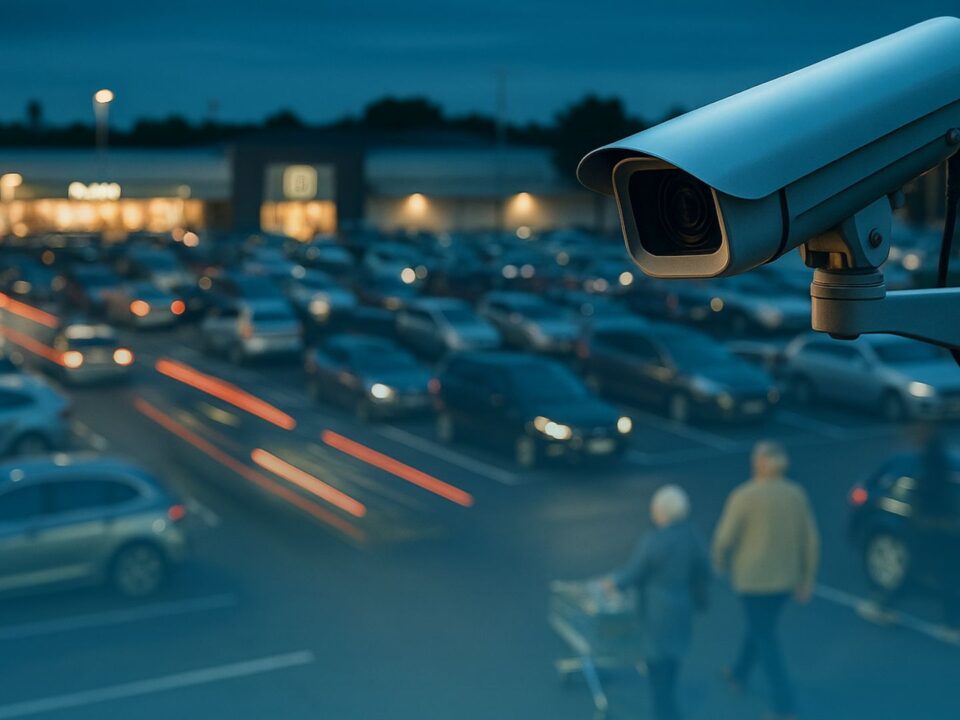When is a Barrier Not a Barrier? When it’s the Problem, not the Solution.

What’s Your Car Park Really Worth? The Business Case for Car Park Management
06/03/2025
When a permit system isn’t enough: Why some car parks still need something more
16/04/2025Why one landowner moved away from barriers to ANPR - And why others are doing the same
When a commercial tenant reached out about their car park, they were frustrated with the barrier system in place. It was slow, unreliable, and led to constant complaints from staff and visitors.
They liked the idea of switching to ANPR, but the landowner wasn’t convinced. Wouldn’t a barrier give more control? Wouldn’t removing it create new problems?
These are understandable concerns, and this landowner wasn’t alone. Many property owners start with the assumption that barriers are essential, but once they step back and assess the reality of managing them, their perspective shifts. This particular landowner was no exception.
The problems with the Barrier
At first, the landowner saw no real reason to change. The GSM-operated barrier had been there for years, and from his perspective, it was doing its job. If anything, he viewed it as a safeguard - something tangible that physically controlled who could enter.
However, the tenant's experience told a different story.
The barrier wasn’t just an inconvenience; it was actively disrupting the smooth running of the site. When it failed, the entire car park either became completely inaccessible or was left open for anyone to enter, creating frustration and security concerns. Staff found themselves caught in queues at peak times, fumbling with fobs or waiting for calls to be answered just to gain access. Visitors who weren’t familiar with the system often ended up confused, leading to additional admin for the tenant.
The landowner was also losing money - though he hadn’t recognised it yet. The cost of repeated engineer call-outs and ongoing maintenance was creeping up. Even when it was working properly, the barrier was causing delays that frustrated authorised users without effectively preventing unauthorised access. It was clear that control was an illusion - a failing barrier gave him no control at all.
Even so, he was reluctant to remove it. Would ANPR really work without a physical barrier in place?

The landowner’s concerns - and the answers
“Without a barrier, how do we stop unauthorised parking?”
A physical barrier feels like it’s stopping unauthorised access, but in practice, it often doesn’t. Tailgating - where one car follows another closely to bypass the system - was a constant issue at this site. The barrier had become a false sense of security rather than a genuine deterrent.
ANPR, on the other hand, offered a solution that didn’t rely on a physical gate. Every vehicle’s entry and exit would be logged automatically, and enforcement could be applied to any unauthorised vehicle. Unlike a barrier, which can be bypassed in a matter of seconds, ANPR meant every single vehicle was accounted for, without exception.
At another site - a retail park that had recently switched from barriers to ANPR - the landowner had initially been sceptical but later admitted that unauthorised parking actually reduced after enforcement became more consistent and manageable. What convinced him was real data: compliance improved because drivers understood that the system was automatic, not something they could work around.
“Won’t we lose control?”
The landowner’s biggest hesitation wasn’t about convenience - it was about control. He was used to the physical presence of a barrier and worried that, without it, he’d have no oversight of what was happening in the car park.
In reality, the opposite was true. A barrier only controls access at a single moment in time - when the arm rises. But once a vehicle is inside, there’s no ongoing visibility. A failing barrier either leaves a car park exposed or locks out legitimate users.
ANPR, however, provided a complete, real-time log of every vehicle that entered and exited. The landowner could see exactly who was using the site, when they arrived, and how long they stayed. If anything, ANPR gave him more control, not less - all without the unpredictability of a mechanical system.
Another landowner at a business park had shared the same concern. Initially hesitant about removing the barrier, he later admitted that switching to ANPR had reduced admin, improved compliance, and eliminated access issues altogether. The ability to update access permissions instantly without issuing new fobs or codes was what ultimately convinced him.
“Isn’t a barrier more secure?”
It’s easy to assume that a barrier automatically improves security, but in reality, barriers only work when they work. They fail. They can be left open. And they don’t prevent tailgating.
The landowner hadn’t thought about the downtime caused by power outages, mechanical failures, or even minor collisions that put the barrier out of action. He had assumed it was protecting the site, but when he really considered it, he realised that anyone who wanted to get in could still find a way.
A residential development we’d worked with had faced this exact problem. The property manager originally believed the barrier was essential, but after multiple breakdowns (and the constant issue of residents tailgating through anyway), they removed it. ANPR gave them a secure, automated way to monitor every vehicle - without the access disruptions that had plagued them before.
Seamless Parking
The decision – moving to ANPR
By the end of the conversation, the landowner agreed to remove the barrier and move to ANPR-only access control.
The result was immediate. Complaints dropped overnight. Staff and tenants no longer had to deal with frustrating queues and access delays. Most importantly, the landowner had more oversight of the site than ever before - without the constant costs of repairing or replacing mechanical parts.
At other sites, we’ve seen landowners reach the same conclusion. Across retail parks, office buildings, and residential developments, those who were hesitant at first later admitted that ANPR was the better long-term solution. Once they moved past the assumption that a barrier was necessary, they saw how much easier and more reliable ANPR was in practice.
Is ANPR right for your Car Park?
There are still some locations where barriers make sense - such as high-security sites that require manual vehicle checks. But for the vast majority of car parks, ANPR alone is the smarter, lower-maintenance choice.
If you’re considering making a switch but aren’t sure whether ANPR is right for your site, we’re happy to talk through the options - whether it’s replacing a failing barrier or integrating ANPR into an existing setup.
Get in touch to see how ANPR could work for your site.






